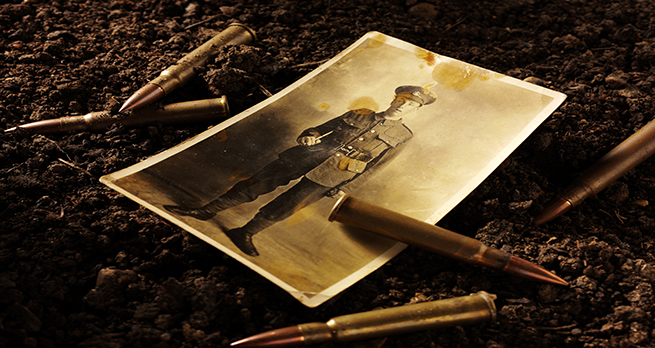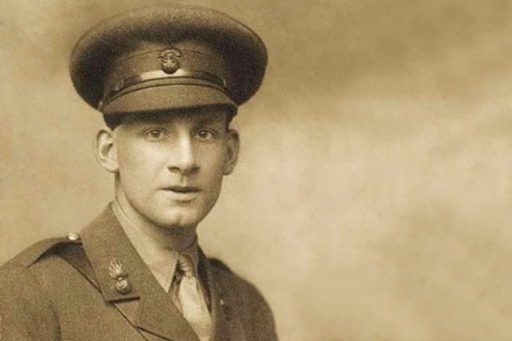3.1.5 Siegfried Sassoon and shell shock
In Britain, shell shock has an iconic cultural status as a symbol of the destructive potential of modern war, and serves almost as a shorthand for soldiers’ suffering in the First World War. This is not least because shell shock has frequently been a subject for literature, with many of the canonical poets and writers of the First World War known to have been treated for the condition themselves.
Siegfried Sassoon, for example, is today one of the most celebrated poets and memoirists of the First World War in Britain. Initially a zealous and committed infantry officer, Sassoon fought with distinction in the Royal Welch Fusiliers on the Western Front. By 1917, appalled by the horrors he had witnessed, and alienated by what he saw as the fatuous jingoism of civilians on the home front, Sassoon became increasingly disillusioned with the war effort. Sassoon consequently wrote an official protest against the war, which he forwarded to his commanding officer and which was eventually read out in the Houses of Parliament by Hastings Lees-Smith, a sympathetic Liberal MP:
I am making this statement as an act of wilful defiance of military authority because I believe that the war is being deliberately prolonged by those who have the power to end it. I am a soldier, convinced that I am acting on behalf of soldiers. I believe that this war upon which I entered as a war of defence and liberation has now become a war of aggression [sic] and conquest. I believe that the purposes for which I and my fellow soldiers entered upon this war should have been so clearly stated as to have made it impossible to change them and that had this been done the objects which actuated us would now be attainable by negotiation.
I have seen and endured the sufferings of the troops and I can no longer be a party to prolong these sufferings for ends which I believe to be evil and unjust. I am not protesting against the conduct of the war, but against the political errors and insincerities for which the fighting men are being sacrificed.
On behalf of those who are suffering now, I make this protest against the deception which is being practised upon them; also I believe it may help to destroy the callous complacency with which the majority of those at home regard the continuance of agonies which they do not share and which they have not enough imagination to realise.
Such an act of defiance placed Sassoon at risk of a court martial, but he was instead deemed as mentally unfit for military service, diagnosed with ‘neurasthenia’, and sent to Craiglockhart hospital. Whether or not Sassoon was actually suffering from shell shock has been debated, but it is interesting to see how this diagnosis could be used to explain away his uncomfortable critique. Regardless, his visit to the hospital was of great significance, as it was here that he met fellow patient and poet, Wilfred Owen. Both Sassoon and Owen would write poetry while in Craiglockhart, with Sassoon in particular offering advice and guidance to his younger friend. Some of this poetry was directly inspired by the mental trauma exhibited by other patients. Sassoon’s poem ‘Survivors’ and Owen’s poem ‘Mental Cases’, for example, were both written in Craiglockhart and hauntingly depict the debilitating mental strains of the war on the other patients they encountered.

